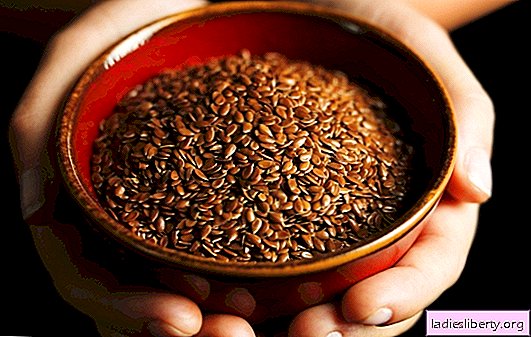
Nutrition is an important component for the full development of the child. It is compiled specifically taking into account the immaturity of the digestive system, the rapid growth rate and development of the body.
Feeding a baby is an extremely important occupation, to which it is necessary to approach the responsible, having certain knowledge on this topic. In this article, you will be presented with several tables on the feeding of a newborn and outlined general principles.
There are several types of feeding:
1) Natural - breastfeeding;
2) Artificial - feeding with a bottle mixture when there is no milk in the mother;
3) Mixed - a type of food in which breast milk is more than 1/5 of the volume of food.
From this will depend on how to feed the baby, the feeding regimen.
Table feeding a newborn in the first and second month
Depending on the type of feeding
Number of feedings | Mode | |
Natural | On demand | |
Artificial | 8 | Every 2.5 hours |
Mixed | 7 | Every 3 hours |
With natural feeding, it is necessary to feed the baby according to his desire (on average 10-12 times a day without certain intervals, not forgetting to put it on his chest at night). This type of nutrition allows you to quickly restore the baby's body weight after physiological loss, increases the amount of milk in the mother. Free feeding is practiced, as a rule, during the first two months of life; later, a newborn’s own rhythm of nutrition is established.
The duration of feeding should not be limited, since the need for contact with the mother’s skin and the sucking reflex are often independent, regardless of the need for food. It is also worth giving with one breastfeeding only one breast in order to maintain lactation at the proper level.
With artificial feeding, first of all, it is necessary to calculate how much mixture a child should receive per day. For this, certain formulas are used:
• If the baby’s age is less than 10 days, the Tour formula is used - daily milk volume = n X 70 (80), where n is the number of days the baby is, a coefficient of 70 is used if the baby’s birth weight was less than 3200 g, the coefficient of 80 with a weight of more than 3200 g
• If the age of the child is more than 10 days, use the caloric method - 115 kcal x weight of the child in kilograms / 0.7
After this, the resulting volume must be divided by the number of feedings in order to find out a single serving.
Children of the first months of life should receive adaptive fresh mixtures, the most similar in chemical composition to human milk (the so-called first, basic or initial mixtures). All of them differ in the degree of adaptability, components. The most famous are NAS 1, Nutrilon 1, Agusha 1. However, it must be remembered that the care of choosing a mixture for the newborn lies entirely on the shoulders of a pediatrician or other specialist trained in baby nutrition.
In the first two months of the baby, you need to feed 8 times with intervals of 3 hours. The first feeding at 6 am, the last at 12 nights, so there is a 6 hour night break.
If the baby has:
- Allergic reaction;
- Lack of weight gain within 1-2 weeks;
- intestinal upset;
- Refusal of food.
It is necessary to change the mixture.
With mixed feeding, you also need to determine the amount of food received per day. The mixture in this case is an addition to breast milk, which ensures the full nutrition of the baby. Depending on the amount of milk in a woman, the effectiveness of feeding varies, approaching either natural or artificial.
Depending on the quantity of milk, the mixture is given either in half with milk, or replacing the missing feedings.
For children in the first months of life, 7 meals are recommended with a 3-hour break. The night break should be 6 hours. Breast milk feeding is advisable immediately after the baby is awakened.
Table feeding a newborn up to 6 months
Number of feedings | Mode | |
Natural | 6 | 3 |
Artificial | 7 | Every 3.5 hours |
Mixed | 6 | Every 3 hours |
Reaching 3 months of age, the child establishes a personal nutritional schedule, which is worth listening to. The amount of daily feeding should not exceed 1 liter. The number of meals decreases and the interval between them increases. The first feeding is recommended at 6 a.m., the last at 12 a.m., so night feeding is canceled. You can adhere to this regime up to 5 months of age. After that you can begin to introduce complementary foods, which you will learn about a little later.
Artificial and mixed feeding is also changed only by the number of feedings and breaks between them. The change of mixture occurs only after the child reaches six months.
Attention! Complete nutrition is breast milk or formula. A variety of fruit juices and mashed potatoes are complementary!
Dokorm is not considered a one-time volume of food, is given between feedings, starting from the age of four. The first juices and mashed potatoes should be monocomponent, preferably from apples, pears, peaches, apricots, carrots. In the future, when the child reaches five months of age, multicomponent products can be given. The composition also significantly expands, adding black currants, raspberries, cherries. After six months, juices and mashed strawberries, tomatoes, citrus fruits are suitable for consumption.
In addition to feeding, an important topic such as the introduction of complementary foods should be raised.
Know the time of the introduction of complementary foods, because too early onset threatens:
1) A violation of the gastrointestinal tract in a baby due to immaturity of the digestive system;
2) The development of food allergies;
3) a decrease in the amount of milk in the mother;
4) Decreased immunity by reducing the immune defense of breast milk.
It is worth starting from the age of five months, when the child is ready to chew, sits confidently, in the absence of acute diseases and stable stool.
The first lure can be porridge or vegetables. Porridge is used if the child has a low weight gain, and vegetables if the baby is prone to constipation.
You need to start with gluten-free or cereal cereals (buckwheat, corn, rice). Vegetables should start with zucchini, pumpkin, carrots, turnips. You can not give several products at once.
It is necessary to introduce complementary foods from a teaspoon, gradually bringing the dose to its full volume over 10 - 15 days. The consistency of the dish should be uniform so as not to make swallowing difficult. If the child did not like the porridge or vegetable, it is worth replacing the product. Completely introduced complementary foods completely replace one feeding with milk or a mixture, do not give it immediately after awakening the baby. It is advisable to put this meal between 10 and 14 hours. After the baby is accustomed to one product, you can start giving a second, guided by the same rules.
The nutrition of the child in the first half of the year plays a key role in the growth and development of the newborn, which places a tremendous responsibility on the shoulders of the parents, because the health of their child will depend on how they approach this issue.











